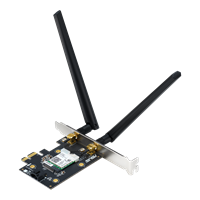Find your perfect match
Compare up to 4 products
Compare details
Download pdf
Copy link
Antenna
Fixed antenna x 2
Network Standard
Bluetooth® 5.0WiFi 6 (802.11ax)
Memory
8 MB Flash, 32 MB RAM
Product Segment
AX3000 ultimate AX performance: 2402Mbps+574Mbps
- The actual transfer speed of USB 3.0, 3.1, 3.2, and/or Type-C will vary depending on many factors including the processing speed of the host device, file attributes and other factors related to system configuration and your operating environment.
- Actual data throughput and WiFi coverage will vary from network conditions and environmental factors, including the volume of network traffic, building material and construction, and network overhead, result in lower actual data throughput and wireless coverage.
- Quoted network speeds and bandwidth based on current IEEE 802.11ac specifications. Actual performance may be affected by network and service provider factors, interface type, and other conditions. Connected devices must be 802.11ac-compatible for best results.


